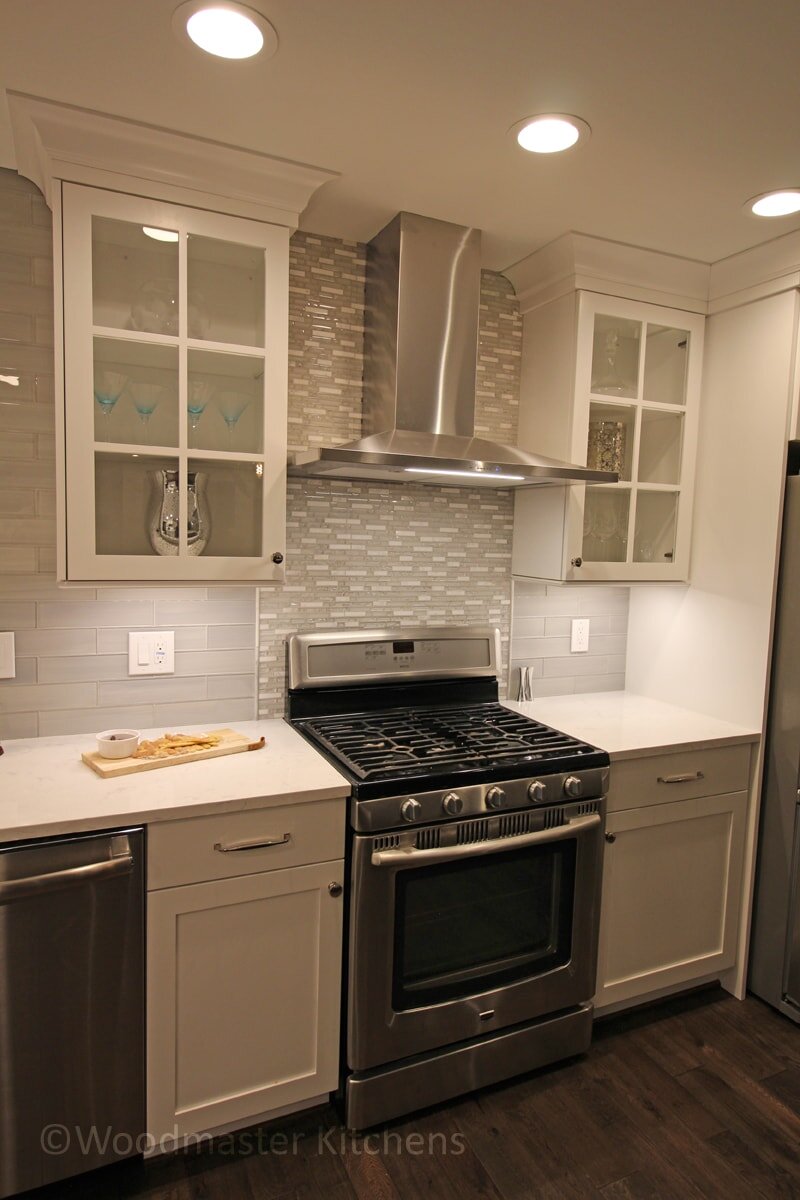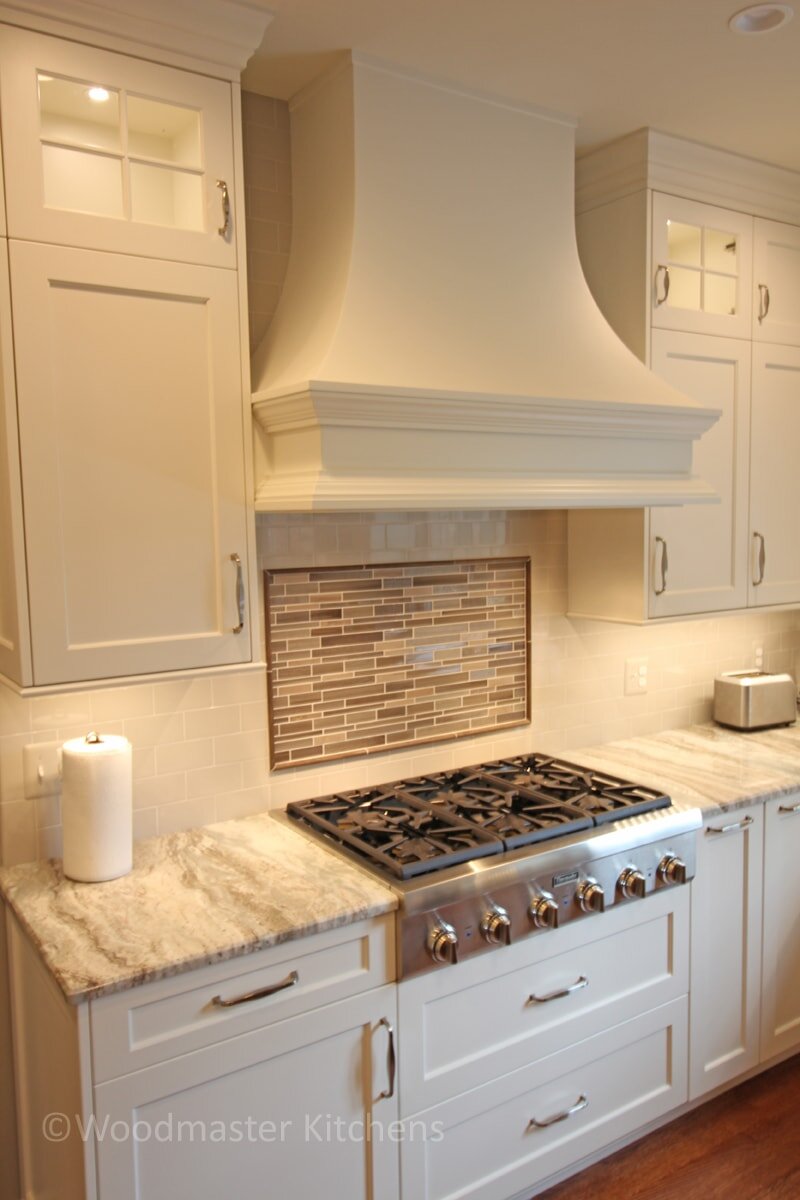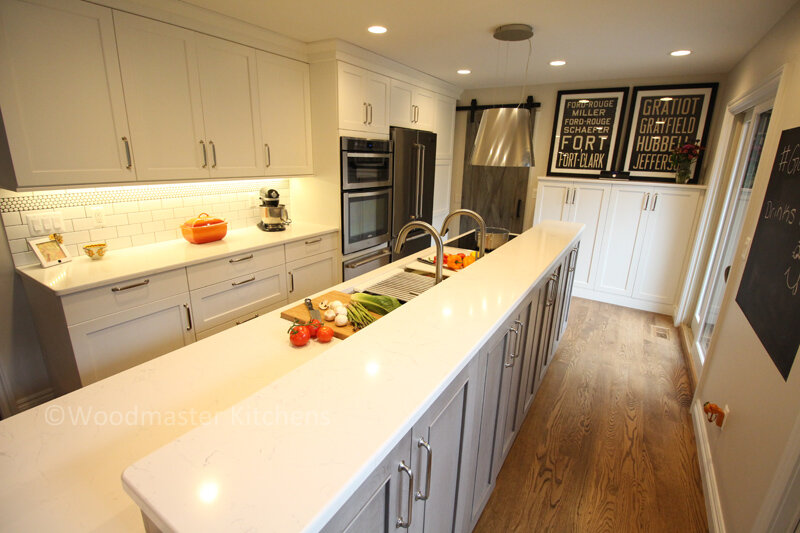Kitchen Remodeling 101: Choosing a Range Hood
Grease, smoke, moisture, and odors are part of daily life in a busy kitchen design, especially if you cook frequently. How do you combat these factors to keep your kitchen free of odors and smoke? A range hood is the answer to this kitchen design dilemma. This unassuming kitchen appliance is just as important as your cooking appliances, so choose carefully.
More than meets the eye!
There is more to a range hood than what you see on the surface. A kitchen hood is composed of the canopy, which must be of sufficient size to cover the cooking area in order to effectively extract the smoke and steam. This often includes an integrated light for extra illumination in the cooking area. The real magic happens behind the scenes, where the fan and filter system work hard to capture and remove unwanted elements from your cooking area. There are many styles of hoods to suit any kitchen design and layout, but you must get the technical considerations right first to make sure your range hood will perform its duties.
Here’s what you need to know about fans.
First, consider how powerful a fan you require. This is measured in cubic feet per minute (CFM), referring to the amount of air your fan can move. Your requirements for a fan will depend on several factors, including the size of your stovetop, whether it is gas or electric, and how much and what type of cooking you typically do. The Home Ventilation Institute recommends 100 CFM per linear foot of range for a wall mounted hood and 150 for an island mounted model. A gas range also requires a higher CFM than an electric one.
You also need to take sound into consideration. The output of sound from a ventilation fan is measured in sones. Higher settings on your fan produce more noise, and some fan models are louder than others. Be sure to properly investigate sound output by testing out models in the store and discussing the options with an experienced kitchen design professional.
Size matters when it comes to range hoods.
Your chosen range hood must cover the area of your cooktop to be sure it will capture smoke and grease from all your burners. Make sure you have enough space above the cooking area to accommodate the manufacturer’s recommended height for your hood, which typically ranges from 24 to 36 inches. Get a hood that is too small or install it too high above your range and it will not be effective at keeping your kitchen clear.
If possible, go ducted.
Range hoods are either vented or unvented. The vented variety attaches to a duct that moves the air outdoors. An unvented (or ductless) range hood includes a fan but no duct. It uses filters to clean the air and recirculate it into your kitchen. It is a better solution, wherever possible, to remove the air from your cooking area outdoors, ridding your kitchen of grease and smoke altogether. The unvented variety does the job, just not as well as their vented cousins. The latter also requires regular cleaning and replacing the filter.
Why would you consider an unvented hood? If your kitchen layout does not support ducting, particularly if you live in an apartment, your only option may be ductless. Also, if you do not already have a duct then installing one can be expensive. A kitchen remodel is the perfect time to make this change, so be sure to discuss your options with your kitchen design professional.
Which style is right for your kitchen design?
Your kitchen layout, size, and the positioning of your cooking area will impact the style of your range hood. Select a material, finish, and style that complements or even helps define your kitchen design. Stainless steel is popular, but some are built into cabinetry to match your kitchen cabinets, finished in stone or even in plaster. They can blend seamlessly with the rest of your kitchen design or stand out as a strong focal point.
Some of the main types of kitchen range hoods include:
Undercabinet range hood: installed directly under a kitchen cabinet over the stove,
Wall-mount chimney hood: installed against the wall, extending to the ceiling with no cabinet overhead,
Island or ceiling-mount hood: attaches to the ceiling over a stove positioned in an island,
Downdraft ventilation: sits beside or behind the stove and removes air directly to ducts beneath the floor,
Combination microwave hood: this combines a microwave and hood in one device and is ideal for a more compact kitchen design.
Understand the technical specifications you need in a range hood first to be sure you are getting the size, power, and noise level that fits your requirements. Then match a hood style to your kitchen layout, style, and finishes to select a range hood that meets your practical and style requirements. Browse more range hood styles in our kitchen design gallery and contact our kitchen remodeling team for more information.





